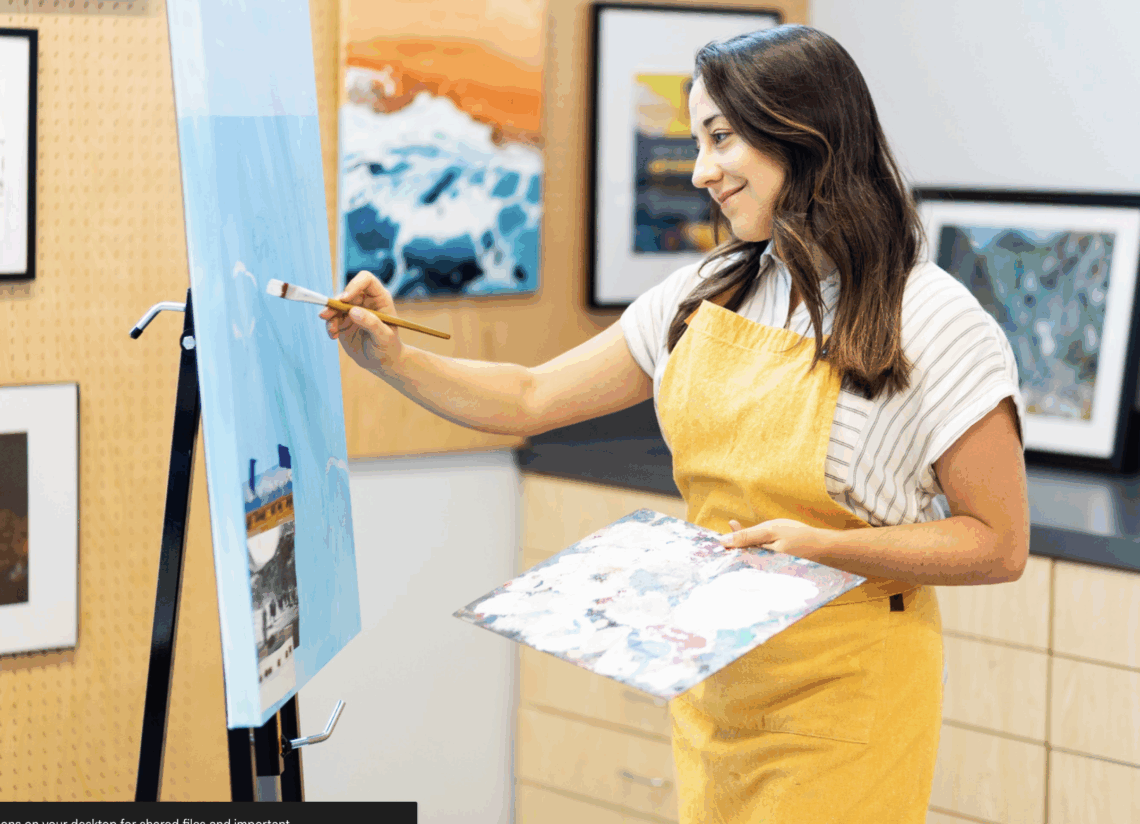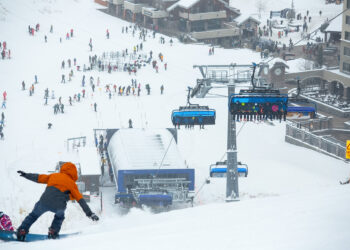Riley to share Indigenous art curriculum at prestigious annual event
By Leslie Kilgore EBS STAFF
Lone Peak High School art teacher Kate Riley is preparing to represent Montana on a national stage after being invited to speak at the upcoming National Art Education Association Conference next spring.
Her acceptance into this prestigious event highlights her innovative efforts to incorporate Montana’s Indigenous art traditions into classroom instruction, emphasizing culturally responsive teaching and authentic engagement with Native American heritage. The selection process for Riley’s presentation was highly competitive.
“This opportunity started when one of my former professors from graduate school reached out after reading my research,” Riley said. “They encouraged me to apply to present at the National Art Education Association Conference. With that support, I submitted a proposal last spring focused on integrating contemporary Indigenous art into classroom teaching.”
More than 2,000 proposals were submitted and reviewed through a blind peer-review, with only a few hundred chosen. Riley said having her session accepted was a true honor, and she’s proud to represent the Big Sky School District. The National Art Education Conference is the largest gathering of art educators in the country.
Riley’s presentation will spotlight culturally responsive teaching strategies that bring contemporary Indigenous artists and perspectives into everyday art lessons. She plans to demonstrate how art can boost student engagement, strengthen critical thinking and deepen understanding of both history and contemporary Indigenous art.


Left: Students in Riley’s art class. PHOTOS COURTESY OF KATE RILEY
“The idea for this work comes from a blend of personal and professional experiences,” Riley said. “Over the years, I’ve had the privilege of working with incredible artists through my time at the Institute of Contemporary Art in Boston, as a gallery director, and in my own classroom. Art isn’t just a form of expression; it’s a way to connect, reflect and engage meaningfully with the world around us.”
Central to Riley’s session is Montana’s Indian Education for All initiative. Unlike most states, Montana constitutionally mandates the teaching of Indigenous history, culture and contemporary issues, a framework Riley and her colleagues have used to build interdisciplinary, research-based art curriculum. She plans to share lesson ideas, classroom strategies and a resource guide that she is developing to help other educators adapt the approach in their own classrooms.
Riley says the Big Sky program stands out because of strong community and administrative support.
“We’re incredibly fortunate to have a strong, innovative art program,” she said, singling out Principal Marlo Mitchem, Superintendent Dustin Shipman, the PTO and the school board for backing classroom initiatives. “If we have an idea or need support, they are always there to help us achieve our goal or vision.”

Students also benefit from a new state-of-the-art studio, quality materials and regular contact with working artists. Their work has earned national recognition, including the National Scholastic Gold Key awards, and is showcased each year in the district’s spring art show at the Warren Miller Performing Arts Center gallery. High school juniors and seniors can also enroll in the International Baccalaureate visual arts course, a rigorous program Riley says helps keep instruction inquiry-driven and student-centered.
Riley also highlighted the ongoing collaboration with Tony Coppola, the district’s IEFA specialist and history teacher. Together they run interdisciplinary projects in which students research pieces from the National Gallery of Art and later see them in person on a Washington, D.C. trip, an experience that Riley says gives students a richer, more personal connection to Montana’s history and the state’s 12 tribal nations.
“Montana has a constitutional mandate for teaching Indigenous history, culture and contemporary issues through the Indian Education for All initiative,” Riley explained. “This model is quite reputable and actually exceeds most states’ requirements in this area.”
Riley’s classroom integrates IEFA into hands-on projects that foster cultural awareness while promoting artistic skills. She also frames many units around the work of a living artist, bringing that authentic voice into the classroom.
“We try and base units off of either a local or national artist, and look at their specific work,” she said.
Riley will travel to Chicago this winter to present at the NAEA conference, where she hopes to both give and gather ideas. “It’s a great opportunity to connect with art educators from across the country and share the innovative work happening in Big Sky,” she said.
She also plans to develop a resource guide, offering practical tools for integrating Indigenous contemporary art into K-12 curriculum.
“It’s a chance to share what we’re doing here in Big Sky, and to help other educators see how culturally responsive pedagogy can create deeper, more meaningful learning experiences,” Riley said.
Students also recognize the importance of Riley’s lessons and the broader Indigenous art curriculum.
“Before we started our Indigenous printmaking project, we learned about artists like Ben Pease and Jaune Quick-to-See Smith. Their work helped us understand Native American themes and their connection to our state’s history. It’s powerful to realize how art keeps these traditions alive,” said LPHS student Will Goldberg. “It’s really cool to see how our work can be part of a bigger conversation about culture and history.”
Senior Elise Daugherty shared how Riley’s teaching influences her personal views.
“Mrs. Riley pushes us to dive deeper into what works of art truly mean, on both an emotional and intellectual level, which allows me to fully find what I want my artwork to convey to the outside world,” Daugherty explained. “She also encourages me to display my unfiltered opinion, and has taught me that it’s okay to be controversial, because evoking strong emotions is what art is truly about.”
Riley emphasized her pride in her students’ work and the importance of sharing Montana’s Indigenous heritage through education.
“I want to show how our district’s art program embodies innovation and cultural awareness,” she said. “Our students produce outstanding work, and I’m excited to bring that energy to a national audience.”














